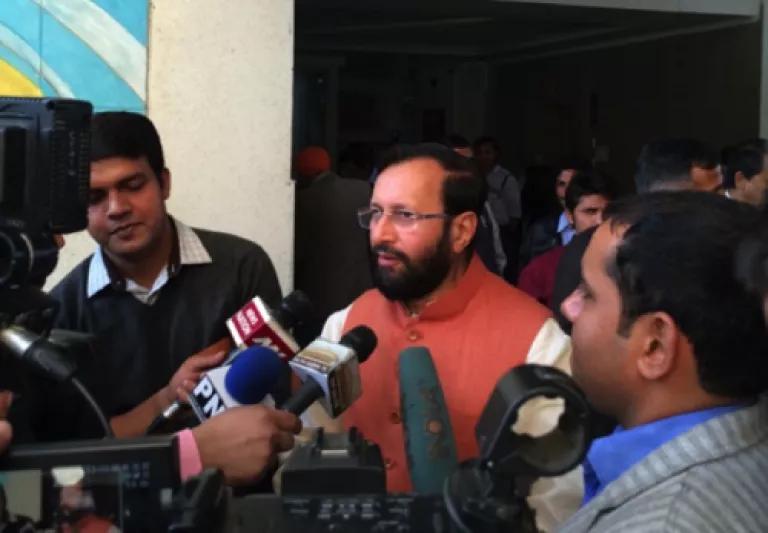
Guest blog by Bhaskar Deol, NRDC India Representative based in New Delhi
India’s Environment Minister Prakash Javadekar has joined ministers heading delegations of 196 countries currently meeting in Lima, Peru at the UN’s Climate Change Conference. They are tasked with putting together the outline of an international climate deal to be agreed upon in Paris in 2015. India has sent a high level delegation to Lima, headed by Minister Javadekar, and is taking an active role at the climate talks.
In Minister Javadekar’s first public address from Lima yesterday, he highlighted India’s aggressive plan to invest $100 billion in clean energy, including solar and wind power. In renewable resource-rich India, investments in solar, wind and energy efficiency are crucial to keep pace with rising energy demands in a sustainable way that improves energy access, energy security and creates local jobs – all while addressing climate change too.
Additionally, India has the opportunity this week to build upon its increased engagement recently demonstrated at the Meeting of Parties to the Montreal Protocol held in November in Paris, and pave the way for significant progress on climate action in 2015. This key “low hanging fruit” to address climate change is phasing down hydrofluorocarbons, or HFCs. HFCs are global warming gases with a climate impact over a thousand times greater than that of carbon dioxide.

Environment Minister Prakash Javadekar speaks to media reporters in Delhi on the eve of climate talks in Lima. (C) Bhaskar Deol, NRDC.
In Paris last month, Environment Minister Prakash Javadekar built upon Prime Minister Modi’s bilateral statement with President Obama issued in November that signaled progress on the HFC phase down front. Minister Javadekar said that India is looking for adequate financing, technology transfer and demonstration projects showcasing technologies that enable a phase down of HFCs – all issues that would materially impact Indian industry in the context of an HFC phase down.
The Montreal Protocol meeting was a good first step forward and laid the foundation for much more to be achieved next year. India indicated openness to addressing a global HFC phase down under the Montreal Protocol and agreed to an accelerated schedule for talks.
In 2015, at least five major opportunities exist for India to take concrete action on HFCs:
- A bilateral task force meeting being scheduled between India and the US in January will provide Indian industry and policymakers an opportunity to discuss issues relating to phasing down of HFCs.
- The task force meeting would immediately precede the visit to India by President Obama at the end of January, creating an opportunity for the two leaders to announce action on HFCs.
- In April 2015, parties to the Montreal Protocol will meet for an extra five days and discuss financing and technical issues, including application of alternative technologies in high ambient conditions – providing countries an opportunity to address key technical and finance issues relating to an HFC phase down as well.
- Further, Montreal Protocol talks in July and November 2015, as well as the scheduled United Framework Convention for Climate Change Convention (UNFCCC) meetings, will provide global leaders ample opportunities to construct a deal that uses the institutions and expertise of the Montreal Protocol to reduce consumption and production of HFCs, while continuing to report and account for the emissions reduced under the UNFCCC.
India’s active engagement in Lima and ambitious solar targets are important steps in the right direction that recognize the risks India faces from the impacts of climate change, with its extensive coastline, high temperatures, and water resources under pressure. By addressing HFCs, India can demonstrate climate leadership. Following this renewed engagement in Lima this week, we hope that India and other global leaders will come to the Montreal Protocol discussions in 2015 with a clear goal of finding a solution and a spirit of international cooperation to find a way to move forward a phase down of HFCs under the Montreal Protocol.
